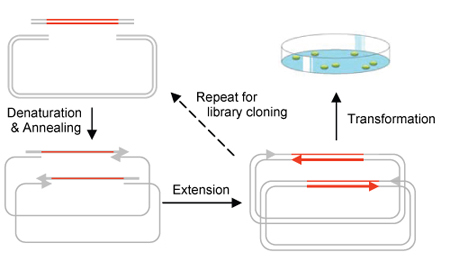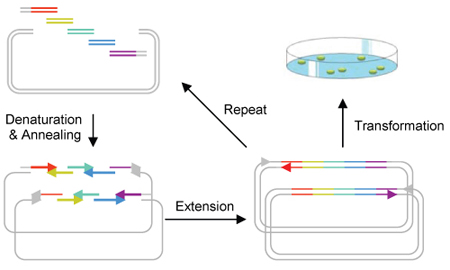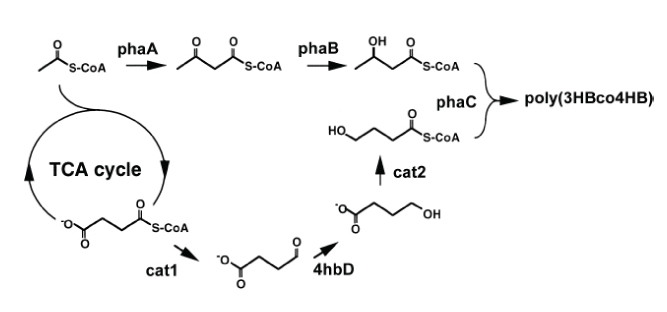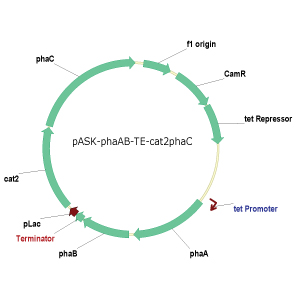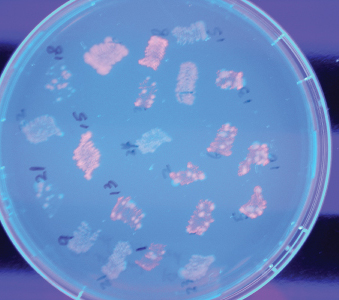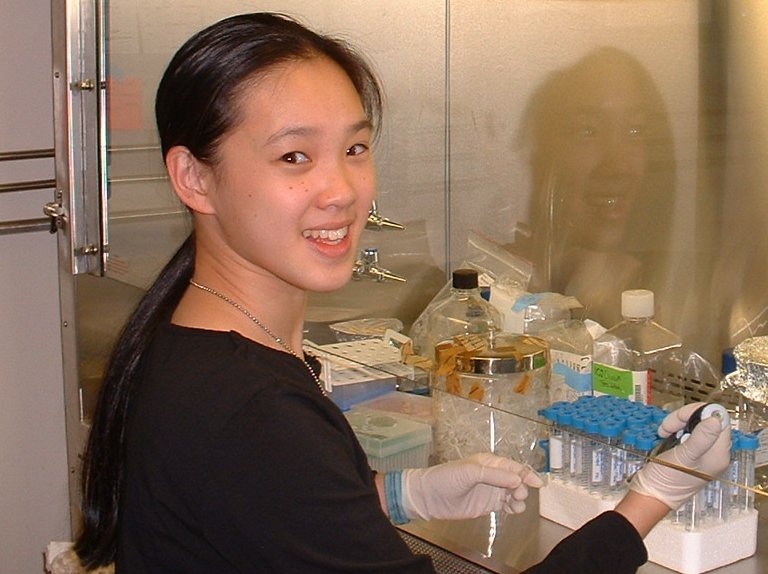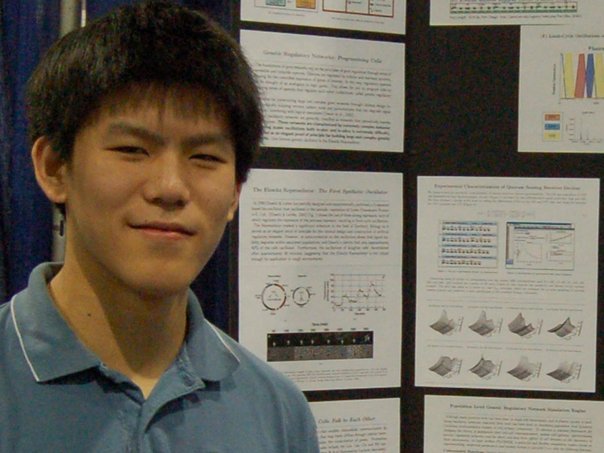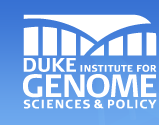Team:Duke
From 2009.igem.org
Sahilprasada (Talk | contribs) (→PCR Product Clean-up for DNA Sequencing) |
Sahilprasada (Talk | contribs) |
||
| Line 375: | Line 375: | ||
Protocol: | Protocol: | ||
1. Perform agarose gel electrophoresis to fractionate DNA fragments. Any type or grade of agarose may be used. It is strongly recommended, however, that fresh TAE buffer or TBE buffer be used as running buffer. Do not re-use running buffer as its pH will increase and reduce yields. | 1. Perform agarose gel electrophoresis to fractionate DNA fragments. Any type or grade of agarose may be used. It is strongly recommended, however, that fresh TAE buffer or TBE buffer be used as running buffer. Do not re-use running buffer as its pH will increase and reduce yields. | ||
| + | |||
2. When adequate separation of bands has occurred, carefully excise the DNA fragment of interest using a wide, clean scalpel. | 2. When adequate separation of bands has occurred, carefully excise the DNA fragment of interest using a wide, clean scalpel. | ||
| + | |||
3. Determine the approximate volume of the gel slice by weighing it in a clean 1.5 ml microfuge tube. Assuming a density of 1 g/ml of gel, the volume of gel is derived as follows: A gel slice of mass 0.3 g will have a volume of 0.3 ml. Add equal volume of Binding Buffer (XP2). Incubate the mixture at 55C-60C for 7 min or until the gel has completely melted. Mix by shaking or inverting the tube every 2-3 minutes. Centrifuge the tube briefly to collect all the liquid to the bottom of the tube. | 3. Determine the approximate volume of the gel slice by weighing it in a clean 1.5 ml microfuge tube. Assuming a density of 1 g/ml of gel, the volume of gel is derived as follows: A gel slice of mass 0.3 g will have a volume of 0.3 ml. Add equal volume of Binding Buffer (XP2). Incubate the mixture at 55C-60C for 7 min or until the gel has completely melted. Mix by shaking or inverting the tube every 2-3 minutes. Centrifuge the tube briefly to collect all the liquid to the bottom of the tube. | ||
Note: For DNA fragment less than 500bp, add 1 sample volume of isopropanol after the addition of Binding Buffer (XP2). | Note: For DNA fragment less than 500bp, add 1 sample volume of isopropanol after the addition of Binding Buffer (XP2). | ||
| + | |||
4. Apply up to 700 ul of the DNA/agarose solution to a HiBind® DNA spin column assembled in a clean 2 ml collection tube (provided) and centrifuge in a microcentrifuge at 8,000-10,000 x g for 1 min at room temperature. Discard the liquid. Re-use the collection tube in Steps 5-8. For volumes greater than 700 ul, load the column and centrifuge successively, 700 ul at a time. Each HiBind® spin-column has a total capacity of 25-30 ug DNA. | 4. Apply up to 700 ul of the DNA/agarose solution to a HiBind® DNA spin column assembled in a clean 2 ml collection tube (provided) and centrifuge in a microcentrifuge at 8,000-10,000 x g for 1 min at room temperature. Discard the liquid. Re-use the collection tube in Steps 5-8. For volumes greater than 700 ul, load the column and centrifuge successively, 700 ul at a time. Each HiBind® spin-column has a total capacity of 25-30 ug DNA. | ||
| + | |||
5. Discard liquid and add 300ul Binding Buffer. Centrifuge at 10,000 x g for 1 minutes. | 5. Discard liquid and add 300ul Binding Buffer. Centrifuge at 10,000 x g for 1 minutes. | ||
| + | |||
6. Add 700 ul of SPW Buffer diluted with absolute ethanol into the column and wait 2-3 minutes. Centrifuge at 10,000 x g for 1 min at room temperature to wash the sample. | 6. Add 700 ul of SPW Buffer diluted with absolute ethanol into the column and wait 2-3 minutes. Centrifuge at 10,000 x g for 1 min at room temperature to wash the sample. | ||
| + | |||
7. Discard liquid and repeat step 6 with another 700 ul SPW Buffer. | 7. Discard liquid and repeat step 6 with another 700 ul SPW Buffer. | ||
| + | |||
8. Discard liquid and, re-using the collection tube, centrifuge the empty column for 1 min at maxi speed (>13,000 x g) to dry the column matrix. This drying step is critical for good DNA yields. | 8. Discard liquid and, re-using the collection tube, centrifuge the empty column for 1 min at maxi speed (>13,000 x g) to dry the column matrix. This drying step is critical for good DNA yields. | ||
| + | |||
9. Place column into a clean 1.5 ml microcentrifuge tube (not provided). Add 30-50 ul depending on desired concentration of final product) Elution Buffer (or sterile deionized water) directly to the center of the column matrix, then incubate for 1 minute. Centrifuge 1 min at maxi speed (>13,000 x g) to elute DNA. This represents approximately 70% of bound DNA. An optional second elution will yield any residual DNA, though at a lo | 9. Place column into a clean 1.5 ml microcentrifuge tube (not provided). Add 30-50 ul depending on desired concentration of final product) Elution Buffer (or sterile deionized water) directly to the center of the column matrix, then incubate for 1 minute. Centrifuge 1 min at maxi speed (>13,000 x g) to elute DNA. This represents approximately 70% of bound DNA. An optional second elution will yield any residual DNA, though at a lo | ||
Revision as of 16:07, 21 October 2009
| Home | Project | Notebook | Team |
Duke University's iGEM team consists of 6 undergraduate students, 2 graduate students, and 2 professors. Due to the high costs and inefficiency of the process of cloning a gene, the DUKE iGEM team has invented a new procedure which lowers costs and increases efficiency. This method, Circular Polymerase Extension Cloning* (CPEC), saves time as well, since this method does not involve ligation or restriction enzymes. The rising costs of the current method of producing biodegradable plastics has hindered its widespread use; however, this year's IGEM team has discovered a more efficient pathway to produce these biodegradable plastics. With this team's determination and motivation, they would like to present their two projects:
*This method has been published and cited. View the paper here
What is CPEC?
Circular Polymerase Extension Cloning (CPEC) is the development of a much simplified sequence-independent cloning technology based entirely on the polymerase extension mechanism. This method extends overlapping regions between the insert and vector fragments to form a complete circular plasmid. An extremely simple theory, CPEC piggybacks PCR in splicing genes. The gene insert is modified to have ends that overlap with the ends of the linearized vector and both have similar melting temperatures. The insert and vector are placed within a PCR machine in the absence of primers. Denaturation separates the double-stranded insert and vector and the overlapping ends anneal. Polymerase extension mechanism is then used to complete the plasmid. Using this method, we are able to quickly assemble a metabolic pathway consisting of multiple enzymes and regulatory elements for the production of a biocompatible as well as biodegradable plastic polymer in E. coli.
What are benefits?
The process of high-throughput cloning is bottle necked at the restriction and ligation stages. A combination of high costs, requirements for restriction site specific enzymes and general inefficiency of the process makes cloning on a large combinatorial gene library inviable. Circular Polymerase Extension Cloning (CPEC) addresses this issue by eliminating the need for restriction and ligation enzymes and thereby streamlining and condensing the procedure into the duration of 5 minutes.Advantages/Disadvantages of BioBricks
- BioBrick parts can be incorporated in E. coli , due to its common interphase.
- BioBrick parts are not easily made due to its site-specific cutting of the plasmid.
Standardized CPEC
We will apply CPEC in the construction of a multi-component plasmid containing biobricks. Previous Duke iGEM projects have yielded the genes in a metabolic pathway that synthesizes poly(3HB-co-4HB), a biodegradable plastic, in E. coli. We will transform those genes into biobricks, with sticky ends, and efficiently combine them in a vector using CPEC.Biodegradable Plastic Synthesis Pathway in E. coli
Polyhydroxyalkanoic acids (PHA), naturally occurring storage polymers found in a variety of bacteria, have received increased attention for their potential use as bioplastics that are both biodegradable and reduce reliance on petroleum-based plastics. In particular, the copolymer poly(3-hyroxybutyrate-co-4-hydroxybutyrate), or poly(3HB-co-4HB), which combines the 3HB and 4HB polymers from different bacteria (Figure 2 shows the pathway), has elastic properties ideal for a wide range of thermoplastic applications. The high cost of PHA, however, is the biggest impediment to widespread use of bioplastics. Moreover, poly(3HB-co-4HB) pathways developed so far in E. coli have yielded undesirably low and unpredictable 4HB-to-3HB ratios.
Thus, this project aims to develop a more efficient
biopathway for poly(3HB-co-4HB) while increasing the 4HB monomer composition predictably.
It was hypothesized that optimizing codon permutations of the phaC gene would
greatly increase affinity of PHA synthase to the 4HB monomer. To date, the phaCAB
and cat2 operons have been cloned into pUC19 and PCR Blunt II-TOPO vectors for
successful independent production of the 3HB and 4HB polymers (Figure 4). Ligation and transformation
into E. coli as six different recombinant constructs will soon be completed
and allow for engineering of the poly(3HB-co4HB) biopathway. Future directions
would be to test the hypothesis to see if phaC can be manipulated to increase
4HB-to-3HB composition in poly(3HB-co-4HB) and to increase efficient production
of the bioplastic by engineering the FtsZ cell division protein to allow for cells
to accumulate larger quantities of PHA granules before dividing. Ultimately, once
an optimal biopathway is found, the goal would be to explore a model for mass
production of PHA bioplastics so that novel applications of bioplastics can be
feasible economically.
Contents |
Calendar
| Duke University iGEM 08-09 Calendar | ||||||||||||||||||||||||||||||||||||||||||||||||||||||||||||||||||||||||||||||||||||||||||||||||||||||||||||||||||||||||||||||||||||||||||||||||||||||||||||||||||||||||||||||||||||||||||||||||||||||||||||||||||||||||||||||||||||||||||||||||||||||||||||||||||||||||||||||||||||||||||||||||||||||||||||||||||||||||||||||||||||||||||||||||||||||||||||||||||||||||||||||||||||||||||||||||||||||||||||||||||||||||||||||||||||||||||||||||||||||||||||||||||||||||||||||||||||||||||||||||||||||||||||||||||||||||||||||||||||||||||||||||||||||||||||||||||||||||||||||||||||||||||||||||||||||||||||||||||||||||||||||||||||||||||||||||||||||||||||||||||||||||||||||||||||||||||||||||||||||||||||||||||||||||||||||||||||||||||||||||||||||||||||||||||||||||||||||||||||||||||||||||||||||
|
Below are several important milestones:
|
| |||||||||||||||||||||||||||||||||||||||||||||||||||||||||||||||||||||||||||||||||||||||||||||||||||||||||||||||||||||||||||||||||||||||||||||||||||||||||||||||||||||||||||||||||||||||||||||||||||||||||||||||||||||||||||||||||||||||||||||||||||||||||||||||||||||||||||||||||||||||||||||||||||||||||||||||||||||||||||||||||||||||||||||||||||||||||||||||||||||||||||||||||||||||||||||||||||||||||||||||||||||||||||||||||||||||||||||||||||||||||||||||||||||||||||||||||||||||||||||||||||||||||||||||||||||||||||||||||||||||||||||||||||||||||||||||||||||||||||||||||||||||||||||||||||||||||||||||||||||||||||||||||||||||||||||||||||||||||||||||||||||||||||||||||||||||||||||||||||||||||||||||||||||||||||||||||||||||||||||||||||||||||||||||||||||||||||||||||||||||||||||||||||||
|
Advisors

| Dr. Jingdong Tian jtian(at)duke.edu Duke BME Department & Duke IGSP | 
| Dr. Lingchong You you(at)duke.edu Duke BME Department & Duke IGSP | 
| Dr. Fan Yuan fyuan(at)duke.edu Duke BME Department |
Graduate Students

| Maggie Jiayuan Quan jq7(at)duke.edu Graduate Student | 
| Faisal Reza faisal.reza(at)duke.edu Graduate Student |
Students
 "
"

